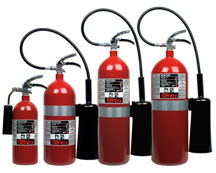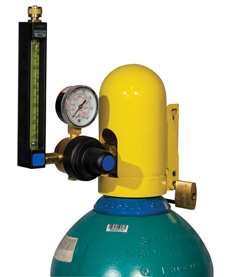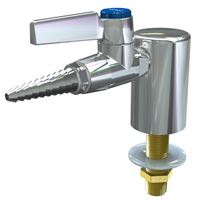| The Home page of ILPI's Safety Data Sheet (SDS) Resource, the leader in SDS information since 1995! | |
| The history and philosophy behind this resource. | |
| A curated collection of books and reference materials concerning Safety Data Sheets and closely related topics. | |
| Paste your plain text SDS into the SDS-Demystifier, and it will be converted into a hypertext-enriched document with links to detailed explanations of each key term. | |
| An extensive list of frequently asked questions about Safety Data Sheets including regulations, content, compliance, and more. | |
| A humorous take on Safety Data Sheet jargon. Fill in the blanks on our entry form to generate a personalized Unsafety Data Sheet to share with your coworkers. | |
| Since 1995, we've maintained this massive curated list of the best places to find Safety Data Sheets on the Internet. | |
| You are here! Way more than a glossary, this hypertext-enhanced resource covers hundreds of SDS-related terms and expert knowledge. Each entry includes both the SDS relevance and links to additional authoritative resources. | |
| Archived results of Safety Data Sheet related polls taken by some of our millions of site visitors | |
| The OSHA regulations behind SDS regulations, including the inspection guidelines and over 400 official interpretations letters under the Hazard Communication Standard | |
| Commercial suppliers of SDS authoring and management software as well as cloud compliance services. | |
| Commercial companies that will create SDS's for your specific needs as well as SDS translation companies. |

Safety signs, banners, and scoreboards? Get yours at Safety Emporium!

Get your CO2 extinguishers at Safety Emporium
Definition
Carbon dioxide is a colorless, odorless, faintly acidic-tasting, and non-flammable gas at room temperature. Solid carbon dioxide, also known by the trade name Dry Ice, sublimes (converts directly from a solid to a gas) at -78 oC (-109 0F) or above.
Carbon dioxide is a molecular solid with a molecular formula CO2. The linear molecule consists of a carbon atom that is doubly bonded to two oxygen atoms, O=C=O.
Note: Although both are common products of combustion, DO NOT confuse non-toxic carbon dioxide with deadly poisonous carbon monoxide.
Additional Info
Carbon dioxide is the fourth most-abundant gas in the Earth's atmosphere. Animals exhale carbon dioxide and plants use photosynthesis to convert it to sugars and other forms of energy.
Commercially, carbon dioxide has thousands of uses. The most familiar example is its use to carbonate soft drinks and beer. It also finds use in a technology called supercritical fluid extraction that is used to decaffeinate coffee. Dry Ice has been used in theatrical productions to make stage fogs (although some modern fog machines now use glycol or glycerin-based solutions instead) and to make "magic potions" bubble as demonstrated on the right.

A common misconception is that carbon dioxide is a visible gas. The white mist that one sees around solid carbon dioxide is actually water vapor that has condensed from the air. The discharge from a carbon dioxide fire extinguisher is white partly due to condensed water vapor and partly due to solid CO2 "snow" which quickly sublimes into invisible carbon dioxide gas.
Carbon dioxide dissolves slightly in water to form a weak acid called carbonic acid, H2CO3:
CO2 + H2O  H2CO3
H2CO3
Carbonic acid reacts slightly and reversibly in water to form a hydronium cation, H3O+, and the bicarbonate ion, HCO3-:
H2CO3 + H2O  HCO3- + H3O+
HCO3- + H3O+
This chemical behavior explains why water, which normally has a neutral pH of 7 has an acidic pH of approximately 5.5 when it has been exposed to air. It also explains the burning/stinging sensation in your nose and eyes when you inhale too quickly from a freshly-opened container of soda pop; the gas quickly reacts with the water in your eyes and nose to form a small amount of carbonic acid.
The primary health dangers of carbon dioxide are:
- Asphyxiation. Releasing any gas in a confined or unventilated area can lower the concentration of oxygen to a level that is immediately dangerous to life or health (see the first link under Further Reading below) . Be very careful entering a truck or room where solid or gaseous CO2 is stored. Likewise, some businesses and laboratories store Dry Ice in large top-loading ice chests; be very careful sticking your head down to retrieve a block from the bottom.
- Concentrations greater than 10% in air. Remember those chemical reactions we saw above? These are chemical equilibria, which means that the relative amounts of products and reactants depend on their concentrations. Large changes in carbon dioxide or bicarbonate concentration can lead to kidney damage, coma or even death! For a great technical discussion of the role of bicarbonate in the body see this laboratory tutorial Blood, Sweat, and Buffers: pH Regulation During Exercise at WUSTL.
- Frostbite. Solid carbon dioxide (Dry Ice) is always -78 oC (-109 0F) at regular atmospheric pressure regardless of the air temperature. Handling this material for more than a second or two without proper gloves can cause serious blisters or worse. Carbon dioxide gas released from a compressed gas cylinder (such as a fire extinguisher) poses a similar danger. Avoid putting any bodily part directly in the path of discharge and be careful when touching any metal parts that the gas flows through.
- Pressure Explosion. Carbon dioxide has a vapor pressure of 830 psi at 20 °C. In other words, if one places solid carbon dioxide in a closed container at room temperature, the carbon dioxide will eventually convert to liquid and the pressure above that liquid will be 830 psi (approximately 56 times normal atmospheric pressure). The pressure will always be 830 psi as long as some liquid carbon dioxide is present in the closed container, and at higher temperatures the pressure will be even greater.
Chapter 53 (Compressed Gases) of the 2018 International Fire Code (IFC), Section 5307.3 addresses carbon dioxide systems used in beverage dispensing applications, requiring either ventilation or an emergency alarm system where carbon dioxide is used or can collect. NFPA 55, the Compressed Gases and Cryogenic Fluids Code, also has alarm requirements for CO2 systems (access is free with registration).

Safety Emporium has a great lineup of gas cylinder signs, storage racks, lockouts, clamps and more.
While such pressures are no problem for pressure-tested gas cylinders or fire extinguishers, ordinary containers (soda bottles, paint thinner cans, Thermos containers etc.) can not handle such pressures and will explode and create shrapnel if solid carbon dioxide is sealed inside them. Putting solid carbon dioxide into any sort of closed container (glass, plastic, metal etc.) is exceedingly dangerous and is likely to result in severe personal injury or death.
If, after reading the above paragraphs, you are even thinking about making a carbon dioxide bomb as a "prank", you are a complete idiot. We have personally read the full medical report of a middle school student who lost an eye in 2006 - to one of several bombs deliberately built by his teacher as a "demonstration". And in 2011, A Chicago-area teacher took out his student's eye attempting to demonstrate pressure by sealing solid carbon dioxide in a plastic bottle. Not only is the risk of injury (or even death) very high, in many states constructing, possessing or using such a device is a felony. See Salt Lake Police Department's Bomb Squad warns against homemade chemical bombs.
Finally, note that carbon dioxide is a "greenhouse gas". Although it is naturally present in the atmosphere, Man's activities such as the combustion of fossil fuels have drastically increased the concentration of CO2 in the atmosphere and contributed to global warming.

All rooms with fixed extinguishing systems must have appropriate warning signs like this one from Safety Emporium.
SDS Relevance
You are most likely to encounter carbon dioxide on a Safety Data Sheet in reference to in Section 5 (fire-fighting measures). Carbon dioxide extinguishers are not appropriate for all fires, especially those involving flammable metals and pyrophoric substances. Using a CO2 extinguisher on such fires would be very much like putting gasoline on a fire! For more information about fire extinguishers and a downloadable PowerPoint presentation, visit our Fire Extinguishers page.
If your company uses an automatic fire extinguishing system (such as in a computer room or where flammable organic solvents are used), critical precautions must be taken to avoid asphyxiation. Special signage and training is essential. Three different OSHA standards cover fixed fire extinguishing systems; see the OSHA link under Further Reading below.
You may also find carbon dioxide mentioned as a decomposition product or as an incompatible material in Section 10 (stability and reactivity) of the SDS.
Further Reading
- A graduate student researcher lost consciousness while retrieving dry ice from a storage chest and could have died. A list of lessons learned and recommendations is included. ACS Chem. Health Saf. 2023, 30(3), 120-123.
- A carbon dioxide delivery driver died of asphyxiation when his supply hose leaked. This OSHA page includes safety info and precautions.
- In 2011 a woman died in a restaurant restroom which had filled with carbon dioxide gas leaking from a faulty supply line.
- Three OSHA standards cover Fixed Extinguishing Systems. Hit the Show/Hide All button for complete information, including signage, detectors etc.
- Carbon Dioxide fact sheet at the Canadian Centre for Occupational Health and Safety.
- Carbon Dioxide Safetygram 18 (137 Kb PDF file) with lots of additional info about handling and storage from Air Products.
- Frostbite injury of the foot from portable fire extinguisher in Dermatology Online Journal 15(9):10 includes graphic photos.
- OSHA's Safety and Health Bulletin on Total Flooding Carbon Dioxide (CO2) Fire Extinguishing System.
- Examining The Risks Of Carbon Dioxide As A Fire Suppressant at the National Institute of Standards.
- Wikipedia's entry on carbon dioxide.
- DryIceInfo.com has all kinds of information and resources about Dry Ice.
- The U.S. is expanding CO2 pipelines. One poisoned town wants you to know its story at NPR discusses the hazard of industrial CO2 releases which can asphyxiate towns.
- Defusing Africa's Killer Lakes at Smithsonian Magazine discusses lakes in Africa that have "burped" mass quantities of CO2 with deadly results.
See also: Asphyxiation, organic, vapor.
Additional definitions from Google and OneLook.
